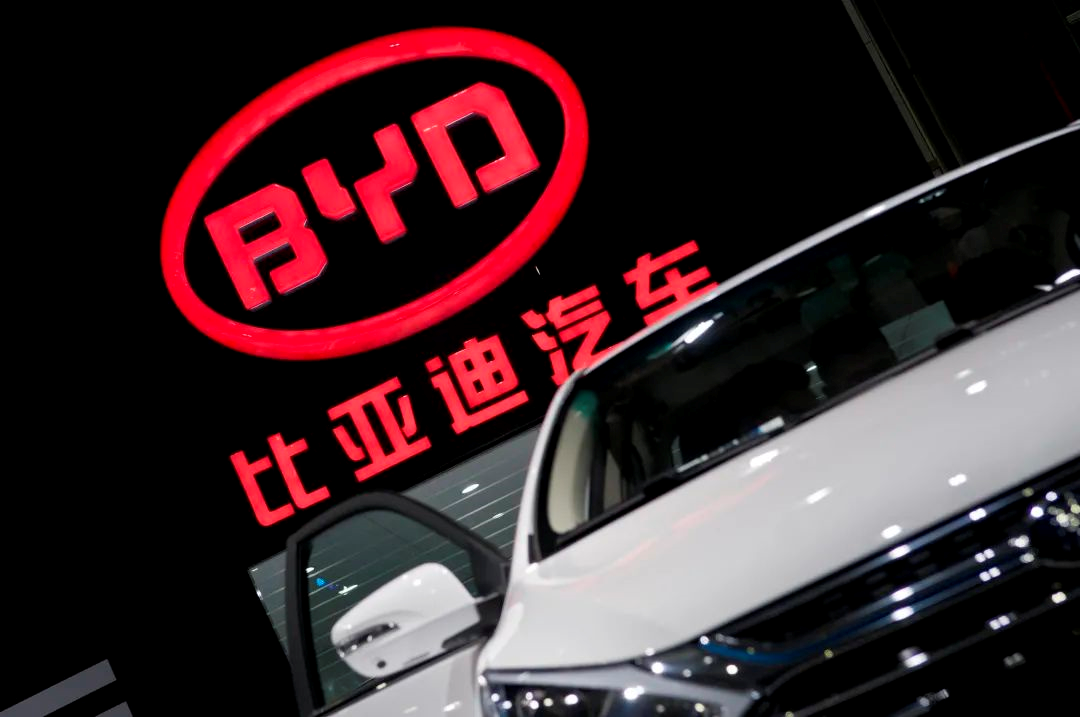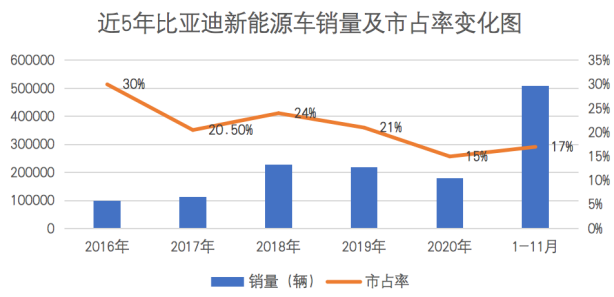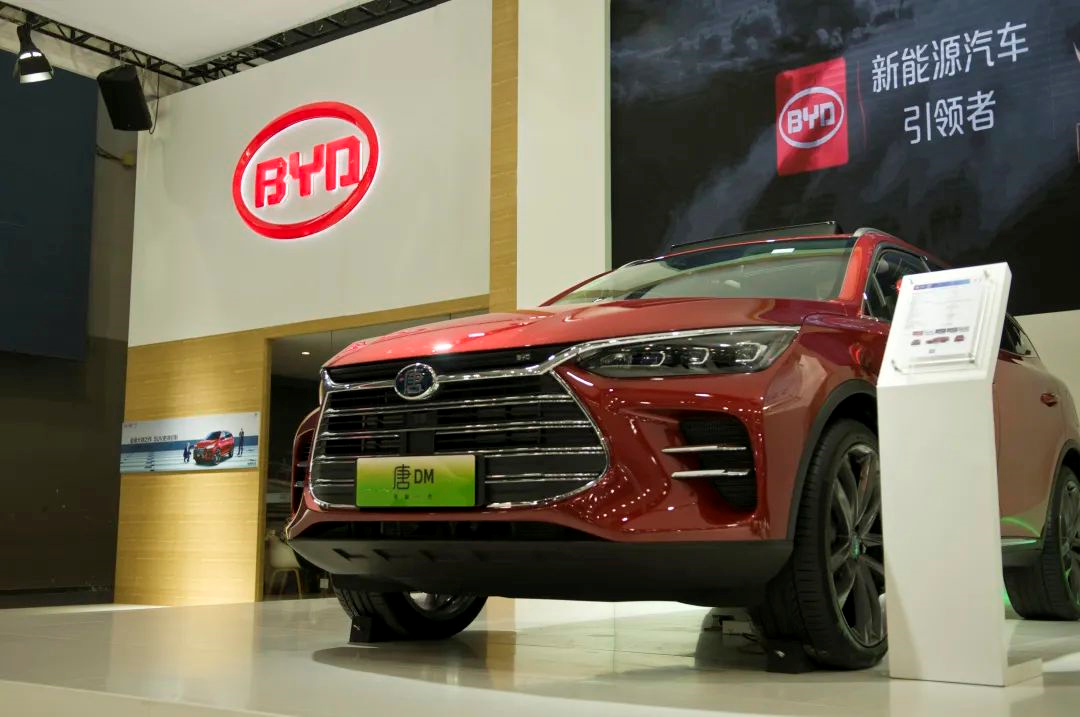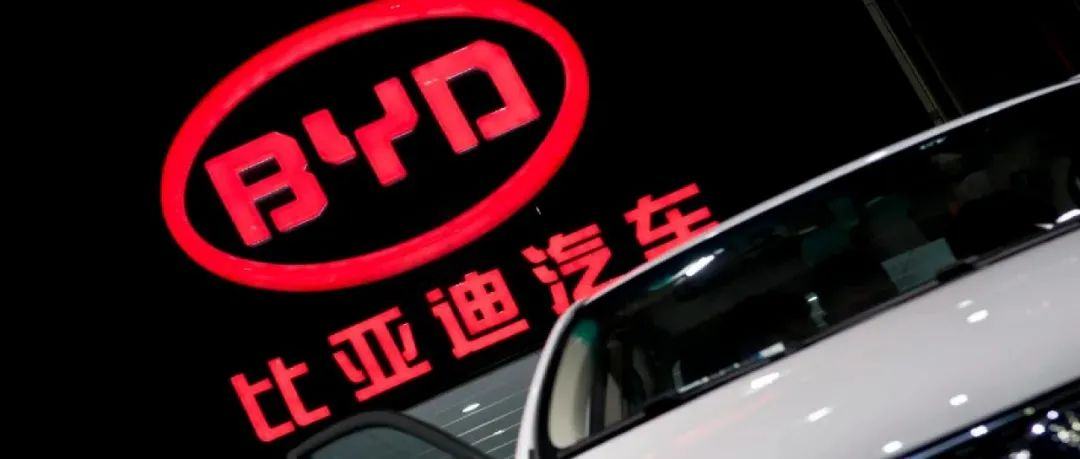The following is the translated Chinese Markdown text into English Markdown text, including HTML tags:
This article is reprinted from Chuxingyike (WeChat ID: carcaijing) and created by the Transportation Industry Group of Caijing. The authors are Yang Li, Xiyin Li, and Huiling Huang, while the editors are Zhiliang Shi and Ling Lu.
Abstract:
In September 2021, BYD’s market capitalization is approaching one trillion, and CITIC Securities gave a market capitalization of 1.54 trillion. There has not been a Chinese automobile company with a market value of over one trillion in history. This opportunity did not appear in the hands of powerful traditional central army players such as FAW and SAIC or in the booming new car-making forces. The private car manufacturer BYD, which focuses on new energy and produces and sells mid-to-low-end automotive products for the long term, is about to accomplish this feat.
To analyze why BYD can achieve a market capitalization of one trillion, the journalist has repeatedly entered BYD’s internal circles and conducted in-depth discussions with BYD’s executives, engineers, dealers, and customers to restore BYD’s overall situation from low-end to high-end, from close to open, and from technology to the market. To make an objective and fair evaluation of BYD, the journalist conducted an in-depth investigation of the industry status and competition patterns of BYD’s various businesses, and had in-depth discussions with many securities analysts, presenting BYD’s prospects, advantages, and hidden dangers clearly and comprehensively.
Starting from the hot spots of the capital market, the article gradually develops from the various business sectors of BYD, presenting the past, present, and future of BYD Group with a dynamic development perspective. At the same time, the article appropriately intersperses relevant little stories about BYD, making the relatively dull company report more full and vivid, with strong readability. It is a high-quality work among the few comprehensive and objective analyses of BYD in the industry.
“In Shenzhen? Oh, I know BYD,” said a taxi driver on a German street. As an institutional investor, Yao Zhipeng, the Head of Growth Investing at Jia Shi Fund, was somewhat surprised that a company that mainly deals with corporate clients could be so globalized.
A few years ago, when BYD (002594.SZ) was mentioned, ordinary people in China would think of electric buses and affordable Volkswagen cars, but as BYD has caught the industry development trend of new energy vehicles, it has increasingly broken through geographical boundaries.

In April 2021, the American magazine TIME selected the “100 Most Influential Companies”, BYD, as the only Chinese new energy overall solution provider, was selected. TIME recognized BYD’s global electric bus business and also introduced passenger cars, including the popular sedan “Han” in the market.for these brands, including SAIC Motor Corporation Ltd (600104.SH), Guangzhou Automobile Group Co., Ltd. (601238.SH), General Motors Company (GM.NYSE), Bayerische Motoren Werke AG (BMW.DE), and Daimler AG (DAI.DE), all of which have been surpassed by BYD in market capitalization in the past two years.
In August 2021, when BYD’s stock price exceeded 300 yuan per share, it was only one step away from becoming the first domestic trillion-dollar vehicle company in terms of market value. Some securities firms have set a target price of 1.5 trillion yuan for BYD, which has boosted market sentiment. Compared with two years ago when its share price fluctuated around 50 yuan per share, BYD has undergone a dramatic transformation in the capital market.
BYD is considered to be one of the representative companies in China’s new energy industry. According to Xu Haidong, Deputy Chief Engineer of the China Association of Automobile Manufacturers, BYD is a traditional automaker that attaches great importance to technology and is also the most future-oriented automaker. The company culture is engineering-oriented, which means it focuses on practical solutions, but is not well understood by outsiders.
Xu Zhongchao, Managing Director of CITIC Capital, told Car Caixin (ID: carcaijing) that BYD, which continuously refining its core technologies, can be regarded as a technology company in the automotive industry.
BYD spans many trillion-yuan markets, such as energy storage, batteries, electric vehicles, chips, etc., and has relatively strong competitiveness in each field with advantages in certain sub-sectors. However, there are still too many uncertainties as to whether BYD will deliver on its valuation and move up a further notch in these areas.
After the National Day holiday, the automobile sector (Shanghai Stock Exchange’s first-tier industry classification) led the market, with the whole vehicle industry sector showing the largest increase. However, the soaring BYD still has not crossed the trillion-yuan market capitalization mark. With the resurgence of the wave of plummeting valuations in the new energy sector at the end of the year, the hope of BYD breaking through the trillion-yuan market capitalization in the short term seems increasingly slim.
As of the close of December 28, BYD’s stock price has fallen to 270.85 yuan per share, with a market capitalization of 788.483 billion yuan. When BYD will break through the trillion-yuan market capitalization threshold is a big mystery in the industry.
Reclaiming the Crown of Global Electric Vehicle Sales
Wang Chuanfu, the Chairman and CEO of BYD Group, bowed to the audience at a press conference in Shenzhen in September 2021, apologizing to consumers for the slow delivery of DM-i hybrid models.
Behind the slow delivery is the unexpectedly high demand for the product. Li Yunfei, the Brand and PR Manager of BYD, revealed to Car Caixin (ID: carcaijing) that BYD had already accumulated more than 100,000 orders.


| Name | Link |
|---|---|
| Clean Technica Data | Source |
| Produced by: Li Yang |
According to the insurance volume data from January to November 2021, BYD’s sales have exceeded the full-year sales of 2020. Tang ARCFOXi, research director of Wilson Intelligent Technology, explained to Carcaijing (ID:carcaijing) that this is thanks to the technological development achievements, including DM-i technology and blade batteries, which have enhanced BYD’s core competitiveness. During interviews, experts in the industry without exception raised DM-i technology, calling it the benchmark product of BYD’s self-developed technology.
Unlike plug-in hybrids in the past, BYD DM-i super hybrid power system relies on pure electric drive as the main driving force. The petrol engine is responsible for power generation, and the electric motor provides power to the car. When necessary, the engine can also directly output power to the car. The overall energy consumption of the vehicle is not only lower than that of fuel vehicles, but also lower than that of traditional oil-electric hybrid cars.
“Now order? The earliest delivery date is next year.” At the Guangzhou BYD Dynasty 4S shop, Carcaijing (ID:carcaijing) saw many people coming to the store to take a look, most of whom were interested in DM-i. Unlike the common chip shortage problem in the industry, BYD’s blade battery production capacity cannot keep up with demand.
Battery technology is one of BYD’s core competencies in making electric vehicles. Wang Chuanfu has high hopes for blade batteries and believes that it can push the technological route of power batteries back to the right track and redefine the safety standards of new energy vehicles. The blade battery looks like a blade and innovates its structure to install more batteries in limited car space. While improving the cruising range, the blade battery’s lifespan is longer and the cost is lower than the mainstream ternary lithium-ion batteries used in passenger cars today.
Insufficient production capacity is a “happy problem” in a macro view. With the rapid growth of global new energy vehicle consumption, BYD has caught the growth momentum. In July 2021, BYD won the global electric vehicle sales champion from Tesla, with sales of new energy passenger cars exceeding 50,000; In August and September, BYD’s new energy passenger car sales continued to rise, breaking through 60,000 and 70,000 units respectively, surpassing Tesla for three consecutive months and crowned the global electric vehicle sales champion.
 In the August ranking of new energy vehicle sales in China, BYD’s sales volume of 90,142 vehicles made it the most popular new energy vehicle company in the Chinese market, twice as much as the second-place SAIC-GM-Wuling (44,157 vehicles) and three times that of the third-place Tesla China (31,732 vehicles).
In the August ranking of new energy vehicle sales in China, BYD’s sales volume of 90,142 vehicles made it the most popular new energy vehicle company in the Chinese market, twice as much as the second-place SAIC-GM-Wuling (44,157 vehicles) and three times that of the third-place Tesla China (31,732 vehicles).
Since 2019, BYD has steadily increased its market share in the domestic new energy market to 20% – 30%, after briefly experiencing a decline in market share to less than 20%. In 2021, BYD caught the wave of the industry’s recovery and its market share has also recovered to around 25%.
BYD has gone through the entire cycle of ups and downs of the new energy vehicle industry. Leveraging its success in electric buses, BYD not only tasted the benefits of promoting electrification but also established its brand overseas.
Founder Wang Chuanfu saw the market trend early and proposed that electrification should be led by public transportation followed by taxis and promote city charging facilities. In 2017, BYD successfully entered the fields of public buses and small electric vehicles, digging up the first gold mine of the electric vehicle market.
Subsequent strategic adjustments have been very flexible. Wang Chuanfu, the chairman of BYD, stated to Car News China that in order to stay ahead of the competition, BYD, which is strategically ahead, must continue to maintain its product leadership or slight strategic advantage. BYD continues to invest, using lean production methods to continuously reduce costs and improve efficiency, and has established its lead in the A0 class small car and in segmented markets.
Currently, BYD electric vehicles have been sold to more than 300 cities in over 50 countries and regions on six continents, with cumulative sales of over 65,000 pure electric buses. In May 2021, at the ceremony for the one millionth new energy vehicle produced by BYD, BYD officially launched its plan to enter the passenger vehicle market overseas. The first 100 new Tang EVs were sent to Norway, completing the “commercial-to-consumer” transformation in overseas markets.
Going abroad with new energy vehicles is a major trend, but only after paying a high tuition fee can enterprises make a targeted effort for the market to accept them. “Many Chinese new energy vehicles are especially concerned about the connected car and entertainment functions in the car, but ignore driving performance. In fact, European consumers are very concerned about driving experience under different circumstances. Chinese automakers will have difficulty entering the European market without paying a lot of tuition to understand local needs,” said He Yipeng, general manager of BYD Europe.
Apart from the success of new energy vehicle sales, breaking up and listing auto parts is also important. The industry generally believes that by outsourcing and contract manufacturing, BYD can open up its profit and valuation space and release the market potential of its subsidiaries.
BYD entered the new energy market very early. In 2003, it entered the vehicle market in this field, and in 2008, it became famous for Warren Buffett’s investment. At that time, the domestic new energy industry chain was almost blank, and BYD was forced to build a complete industry chain to meet its business development needs.Due to the nascent stage of the new energy vehicle market in China, BYD’s so-called “new energy independent technology” has always been shrouded in mystery. In 2018, after years of being closed off, BYD began to open up by divesting its automotive electronics business and setting up a separate department, selling batteries to other car companies; in the same year, all the technologies related to the electric vehicle e-platform were fully opened to the public.
In 2020, BYD fully opened up by establishing five companies, namely Furui Battery, Furui Vision, Furui Technology, Furui Power, and Furui Mold, covering nearly all the business related to new energy vehicle production, manufacturing, and research and development. The goal is to accelerate the process of selling core new energy vehicle parts to the outside world.
After the split, each subsidiary of the automotive components began to seek success in the market. In July 2021, the Shenzhen Stock Exchange accepted the listing application of BYD Semiconductor on the GEM board, but the review was suspended twice by the exchange for the law firm of the issuer being investigated and due to the shortage of raw materials. Furui Battery is also actively seeking to go public. In the medium to long term, each subsidiary of the components business has a plan to go public.
Wang Chuanfu told carcaijing that “BYD’s 1.0 commercialization strategy is to split the component business, allowing the motor, battery, and powertrain businesses to compete with peers in the form of separate business units. Commercialization 2.0 is to sell the whole company to receive recognition from the capital market.”
Today, BYD Semiconductor’s business has covered research and development, production, and sales of power semiconductors, intelligent control ICs, intelligent sensors, and optoelectronic semiconductors, possessing an integrated operation of the entire industry chain, including chip design, wafer manufacturing, packaging and testing, and downstream applications.
Component supply involves the core secrets of car companies, and some industry experts believe that other car manufacturers may be reluctant to purchase BYD’s components. Regarding this, Li Yunfei responded that as long as the financial and equity separation is done properly, the market only cares about the product strength.
In the field of technology, BYD has a certain foundation. In terms of power batteries, since the release of BYD’s blade battery, the market for lithium iron phosphate has gradually rebounded, surpassing ternary lithium batteries. In the market, BYD’s market share is second only to CATL; in energy storage, since 2013, BYD has been promoting large-scale commercialization worldwide, with a total global sales volume of more than 1.7GWh. BYD is the largest Chinese energy storage provider for overseas electrochemical energy storage (excluding household energy storage) shipments in 2020, and its energy storage battery performance ranks second in China.
The supply of components to the outside world attracts many major customers, in addition to the publicized Mercedes-Benz, Toyota, and Hino, there are more brands in cooperative negotiations: some buying individual technologies, some buying some components, some buying the entire e-platform components, and some are contracting the entire vehicle.
Two decades of technological accumulation throughout the entire industry chain is both a huge advantage and confidence for BYD in facing the market demands, as well as a reason for its high valuation. However, as it has never directly competed in the market, how to truly gain recognition from peers still needs time to test.
In the eyes of employees, Wang Chuanfu, who has led BYD through ups and downs, has absolute authority. During the COVID-19 pandemic, faced with suspended workshops, he “firmly” promoted technological changes for R&D staff, transforming a phone components factory in Shenzhen into a mask manufacturing factory, with 2,000 mask production lines built within 10 days and a maximum daily production capacity of 100 million masks, making it the world’s largest mask manufacturer.
In the path of diversified management, BYD has also encountered hardships. The Cloud Rail business, once called by Wang Chuanfu to “create another BYD”, seemed awkward given the explosive growth of BYD’s market value.
Cloud Rail is a strategic product launched by BYD in 2016. Upon release, it quickly received intentions to order from many cities at home and abroad. In September 2017, the first commercial Cloud Rail line went into operation in Yinchuan. For a time, Cloud Rail outshined the new energy vehicle business.
The following year, influenced by policies, many Cloud Rail projects were halted by the government. It wasn’t until April 2021 that the first train for cross-sea Cloud Rail for use in Bahia state of Brazil was rolled out in Shenzhen, made by BYD. In October 2021, BYD debuted at the 2021 Beijing International Urban Rail Transit Exhibition, and the long-muted Cloud Rail business of BYD began to stir again.
Multiple fund managers told CX-News (ID:carcaijing) that the Cloud Rail business was not considered in BYD’s current valuation. Such comments are relatively obscure, but rail transport has never been a good investment target.
Several capital figures told CX-News (ID:carcaijing) that rail transport such as Cloud Rail is generally seen as infrastructure construction, with large investment and long return periods, low capital interest, unsexy stories, and naturally difficult to have good valuations.
From an investor’s perspective, buying BYD’s stock means more optimism toward its new energy business. Compared with Cloud Rail, BYD should prioritize solving the sales volume and brand problems of complete vehicles.
Prices are high, but the brand is not yet high-end
Car manufacturers are pursuing brand premiumization to enhance competitiveness and bring higher premiums. As new products sell well and the price of each vehicle gradually increases, how has BYD’s high-end brand progressed?
BYD has made a lot of effort. Wang Chuanfu and E-Net, the two major sales platforms, are completely independent to insulate the brand influence of low-end models on high-end models. The company is constantly launching high-end products. Currently, mid-to-large cars account for more than 17% of BYD’s sales volume.
In Wen Wen, Boni Consulting’s director of research, BYD’s design elements are in line with the trend, the layout matches market demands, and it has gotten rid of the product line of many years ago with large size and low price.
Li Yunfei believes that behind the continuous increase in BYD’s sales and stock prices is the recognition of the brand by consumers, and the brand image has undergone significant changes. According to Li Yunfei’s disclosure, “in the second half of 2022, BYD will launch its own high-end brand, and the first car under the brand will be a rugged off-road vehicle, with a price range of 500,000 to over 1 million RMB.”
The average price of BYD’s bicycles keeps rising. Wilson’s data shows that from January to July 2021, the average price of BYD’s bicycles had reached 151,800 RMB. Compared with the best-selling joint venture brand Volkswagen in China, the average price of a single car is around 160,000 RMB. In terms of product pricing, BYD is already neck-and-neck with joint venture automakers.
The 200,000 RMB per car price point is considered the watershed for domestic high-end car models. According to statistics from ‘Carcaijing’ (ID:carcaijing), BYD has six models with a price above 200,000 RMB, including 15 different configurations, while the new energy version of BYD Tang has reached 340,000 RMB.
However, according to the survey results shared by Wenwen with ‘Carcaijing’ (ID:carcaijing), BYD’s progress has not been fully conveyed to consumers. In the eyes of consumers, BYD is still considered low-end, cheap, and poorly made. After all, brand image is difficult to change once established, and it is extremely difficult to evolve through product upgrades.
“As a BYD Qin PLUS DM-i user, I bought BYD for its cost-effectiveness, and I wouldn’t consider luxury car models,” said one consumer to ‘Carcaijing’ (ID:carcaijing). Some consumers regard BYD as an ordinary domestic brand, neither low-end nor high-end. BYD has created products that meet consumer needs, but still hasn’t established a brand.
It should be pointed out that BYD’s appeal to consumers still relies on new energy technology, and smart cars have not yet become a characteristic of BYD’s products. “Currently, the experience of BYD’s smart cars lags behind that of new carmakers such as XPeng, LiAuto, and NIO,” said a new energy fund researcher to ‘Carcaijing’ (ID:carcaijing). “But BYD is actively seeking cooperation to upgrade its smart technology, and the gap in smart technology in the future won’t be too large,” he added.
BYD is aware of its shortcomings. Liu Ke, deputy director of BYD’s product planning and automobile new technology research institute, said that whether the car can completely replace or even surpass the phone is the only standard for smart cars.Currently, BYD’s DiLink intelligent networking system has been updated to version 3.0, which can run all Android-based software and can to some extent replace smartphones. However, this is not enough. A young consumer, after experiencing Han’s in-car system at a 4S store, was surprised by its response speed and stated that its smoothness was better than that of XPeng’s. Despite this, the consumer still chose XPeng over Han because while Android has strong compatibility, it lacks uniqueness and is not trendy enough. This is why XPeng’s in-car system is preferred. BYD needs to meet the demand of consumers looking to express their individuality.
It is widely believed that only when a brand is enhanced can the product price be raised. Only by strengthening the intelligent networking function can the product profit be expanded. Through digitization, software subscriptions, and other methods, car transactions will no longer be one-off deals. This is precisely where BYD needs to strengthen its automotive products.
Talent competition is ultimately the core of enterprise competition. Jim Collins, management guru, proposed the management concept of “people come first” in his book “From Good to Great”. This means that companies must first recruit and retain suitable personnel before deciding on the direction and strategy for development.
In the new field of intelligent electric vehicles, the competition for talent has never been more intense.
On August 30th, Geely Automobile (0175.HK) announced that it will grant more than 10,000 people 167 million shares, worth about HKD 4.49 billion calculated by market value. Coincidentally, another private auto giant, Great Wall Motors (02333.HK), announced that it will grant a total of 32.6532 million restricted shares to 557 incentive objects, and a total of 300 million stock options to 8,147 incentive objects.
“The biggest feature of this equity incentive plan is its universality,” explained Finance and Accounting Professor Ruimeng from China Europe International Business School to a reporter from Carcaijing (ID: carcaijing). Unlike traditional equity incentive plans which only target executives, this time the number of people covered is large, and the amount of money is significant, giving it a sense of sunshine and warmth.
If traditional auto companies want to compete for talent with internet and new car companies, they need to make some changes in terms of compensation. Wang Huan, Client Solutions Director of LinkedIn China, told a reporter from Carcaijing (ID: carcaijing) that this will force companies to change their employee compensation structure and incentive mechanisms.
However, BYD has done little in this regard. BYD’s latest equity incentive was in June 2015, when no more than 32.66 million shares of the company’s stock were issued to 97 supervisors, executives, etc.
Valuing research and development but having a very rough talent management plan is a double-edged sword for BYD.## BYD Senior VP and Director of Engineering Research Institute, Lian Yubo stated that BYD engineers have the highest status and the best treatment within the company, as they take pride in the culture of engineers. As of the end of the 2020 reporting period, the number of BYD R&D personnel has grown to 35,776, accounting for 16% of the total employees in the group.
However, the treatment of R&D engineers in BYD is severely polarized. Some top-notch engineers who master core technology enjoy generous treatment, while many other R&D personnel may feel lost and helpless.
In the 2020 financial report, Lian Yubo’s pre-tax annual salary was 6.829 million yuan, higher than the 5.336 million yuan annual salary of Chairman Wang Chuanfu. The pre-tax annual salary of Senior VP and Director of the Institute of Power and Energy Science, Luo Hongbin, was 7.378 million yuan. In the salary structure of BYD executives, the proportion of technical staff is higher.
Shu Youxing, the former general manager of BYD Automobile Sales Co., Ltd, once told carnewschina (ID: carcaijing) that graduates are the main force of BYD. At the same time, in order to improve the quality, BYD also introduced overseas experts from various fields to drive the collaborative development of graduates.
A BYD engineer who just resigned expressed to carnewschina (ID: carcaijing), “I have been working in BYD for 4 years, and my pre-tax salary has only increased from 7,300 yuan to 9,000 yuan.” In the overcrowded Shenzhen, even in the relatively remote Ping Shan, a pre-tax salary of 9,000 yuan is still relatively low.
“Thanks to BYD’s training, but due to life pressure, I have to resign and find another job.” According to the engineer, similar situations are quite common in BYD, with a very high talent turnover rate.
Another female engineer at BYD experienced an inhumane encounter. She passed the technical interview in an internal job transfer, but the original department refused to release her, leaving her stranded in the game between the two departments, and she had to resign.
The intelligent electric vehicle track is in a stage of rapid development, and even inexperienced mature employees are being snatched up by various forces. Grassroots engineers often have their worth multiplied several times after leaving BYD.
On the one hand, the total salary of senior management at BYD is always at the forefront of car companies, and high salaries are used to recruit excellent engineers. On the other hand, there is a lack of care for grassroots R&D personnel, with a large number of “soldiers” flowing to competitors.
Several industry insiders have said that there is an ancient Chinese saying, “A troop of horses will not stand still, a bunch of soldiers will not be useful.” Previously, car companies believed that “it’s easy to get a thousand troops but difficult to find a good general,” and ordinary employees, including middle-level managers, have not received the attention they deserve, and car companies are seeking to focus on big rather than small. However, in today’s era of various emerging automakers vying for talent, “soldiers” are also a must-win resource. In the age of talent bidding in the automotive industry, BYD’s management approach is undoubtedly behind the times.The recruitment of employees is not the end, but a new beginning for companies. Wang Huan suggests that in the digital transformation, traditional automobile manufacturing and auto parts companies should pay special attention to integrating genes of youth and innovation into the corporate culture, thereby stimulating the creativeness of talents and achieving better integration between talents and corporate culture.
BYD has received much attention from the capital markets, but there are both opportunities and risks.
According to Wind data, as of the 2021 interim report, BYD (002594.SZ) had 889 holding funds, accounting for 9.27% of its circulating shares, with a total market value of holdings of 26.88 million yuan. This involved 121 fund companies, which means that all public funds in the market have bought some BYD shares to varying degrees. In addition, 73 funds hold BYD Electronics (0285.HK), and 57 funds hold BYD Co. Ltd. (1211.HK).
The market also has different opinions. In June of this year, Morgan Stanley stated that BYD’s risk-return ratio is currently low, thus lowering the company’s A-share and H-share ratings to “Underweight”. In August of this year, CITIC Securities gave a six-month target price of 540 yuan, corresponding to a market value rating of 1.5 trillion yuan, which caused a stir in the market.
Some believe that BYD has the potential to become an international giant, but there are also internal problems. With such a large investment of group resources, is it enough to focus? When the automotive industry encounters unprecedented changes, can BYD remain at the forefront? It still requires time for answers.
“The new energy industry is just getting started, and the capital market is paying close attention. The current stock price includes optimistic expectations for next year, but the industrial cycle of this industry is relatively long and has not been fully discounted.” Wang Guanqiao, a researcher at Citic Prudential Fund, told Car Caixin (ID: carcaijing).
It is worth noting that in different stages of the industry’s development, capital markets have different research and investment priorities. Looking at the long and winding development of new energy vehicles, such as electrification, intelligence, and interconnection, it is still in a relatively early stage.

This article is a translation by ChatGPT of a Chinese report from 42HOW. If you have any questions about it, please email bd@42how.com.
